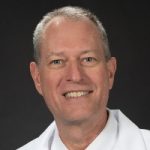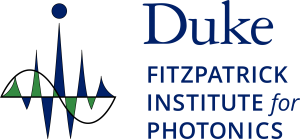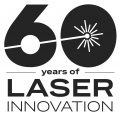A Virtual Symposium hosted by the Fitzpatrick Institute for Photonics | May 16, 2020
Special Topics: Photonics in the Era of Data Science: From Smart Sensing to AI
Virtual Agenda
Introduction
 Tuan Vo-Dinh
Tuan Vo-Dinh
Director of the Fitzpatrick Institute for Photonics, R. Eugene and Susie E. Goodson Professor of Biomedical Engineering and Professor of Chemistry, Duke University
View Biosketch
Dr. Vo-Dinh is R. Eugene and Susie E. Goodson Distinguished Professor of Biomedical Engineering, Professor of Chemistry, and Director of the Fitzpatrick Institute for Photonics at Duke University. His research interests involve the development of advanced technologies for the protection of the environment and the improvement of human health. His research activities are focused on nanophotonics, biophotonics, nano-biosensors, biochips, molecular spectroscopy, medical diagnostics and therapy, immunotherapeutics, bioenergy research, personalized medicine, and global health. Dr. Vo-Dinh has received seven R&D 100 Awards for Most Technologically Significant Advance in Research and Development for his pioneering research and inventions of innovative technologies. He has received the Gold Medal Award, Society for Applied Spectroscopy (1988); the Languedoc-Roussillon Award (France) (1989); the Scientist of the Year Award, ORNL (1992); the Thomas Jefferson Award, Martin Marietta Corporation (1992); two Awards for Excellence in Technology Transfer, Federal Laboratory Consortium (1995, 1986); the Inventor of the Year Award, Tennessee Inventors Association (1996); and the Lockheed Martin Technology Commercialization Award (1998), The Distinguished Inventors Award, UT-Battelle (2003), and the Distinguished Scientist of the Year Award, ORNL (2003). In 1997, Dr. Vo-Dinh was presented the prestigious Exceptional Services Award for distinguished contribution to a Healthy Citizenry from the U.S. Department of Energy. In 2011 Dr. Vo-Dinh received the Award for Spectrochemical Analysis from the American Chemical Society (ACS) Division of Analytical Chemistry. In 2019, Dr, Vo-Dinh was awarded the Sir George Stokes Award from the Royal Society of Chemistry (United Kingdom).
Welcome Remarks
 Ravi V. Bellamkonda
Ravi V. Bellamkonda
Vinik Dean, Pratt School of Engineering, and Professor in the Department of Biomedical Engineering, Duke University
View Biosketch
Ravi V. Bellamkonda is the Vinik Dean of the Pratt School of Engineering at Duke University. Prior to becoming dean, Bellamkonda served as the Wallace H. Coulter Professor and chair of the Department of Biomedical Engineering at Georgia Institute of Technology and Emory University. He is committed to fostering transformative research and pedagogical innovation as well as programs that create an entrepreneurial mindset amongst faculty and students. A trained bioengineer and neuroscientist, Bellamkonda holds an undergraduate degree in biomedical engineering. His graduate training at Brown University was in biomaterials and medical science (with Patrick Aebischer), and his post-doctoral training at Massachusetts Institute of Technology focused on the molecular mechanisms of axon guidance and neural development (with Jerry Schneider and Sonal Jhaveri). His current research explores the interplay of biomaterials and the nervous system for neural interfaces, nerve repair and brain tumor therapy. From 2014 to 2016, Bellamkonda served as president of the American Institute for Biological and Medical Engineering (AIMBE), the leading policy and advocacy organization for biomedical engineers with representation from industry, academia and government. Bellamkonda’s numerous awards include the Clemson Award for Applied Research from the Society for Biomaterials, EUREKA award from National Cancer Institute (National Institutes of Health), CAREER award from the National Science Foundation and Best Professor Award from the Georgia Tech Biomedical Engineering student body.
Special Celebration
Celebrating International Day of Light 2020 and 60th Anniversary of the Laser
 John Dudley
John Dudley
Co-Chair, UNESCO Steering Committee-International Day of Light, Professor of Physics, University of Franche-Comté (France)
View Biosketch
John Dudley is a Professor of Physics at the University of Bourgogne Franche-Comté working at the CNRS Institute FEMTO-ST in Besancon, France. His research covers broad areas of optical science and he has published extensively in fields of ultrafast source development, nonlinear optics, and extreme events and rogue waves. He has received a number of national and international distinctions, including the CNRS Médaille d’Argent, the Edgerton Award from SPIE, and the Wood Prize from OSA. He is a Fellow of OSA, IEEE, EOS, SPIE, IOP and HonFRSNZ. He has worked on international outreach initiatives with UNESCO since 2014, and currently chairs the International Day of Light Steering Committee.
View Abstract
The International Day of Light is celebrated on 16 May each year, the anniversary of the first successful operation of the laser in 1960 by Theodore Maiman. This day is a call to strengthen scientific cooperation and harness its potential to foster peace and sustainable development. This talk will briefly outline its aims and objectives, and will also review some elements from the history of the laser which itself celebrates its 60th birthday this year.
“International Day of Light 2020: Light, Lasers, and Development”
Symposium Keynote
 Donna Strickland
Donna Strickland
2018 Nobel Laureate in Physics, Professor in the Department of Physics and Astronomy, University of Waterloo (Canada)
View Biosketch
Donna Strickland is a professor in the Department of Physics and Astronomy at the University of Waterloo and is one of the recipients of the Nobel Prize in Physics 2018 for developing chirped pulse amplification with Gérard Mourou, her PhD supervisor at the time. They published this Nobel-winning research in 1985 when Strickland was a PhD student at the University of Rochester in New York state. Together they paved the way toward the most intense laser pulses ever created. The research has several applications today in industry and medicine — including the cutting of a patient’s cornea in laser eye surgery, and the machining of small glass parts for use in cell phones. Strickland was a research associate at the National Research Council Canada, a physicist at Lawrence Livermore National Laboratory and a member of technical staff at Princeton University.
In 1997, she joined the University of Waterloo, where her ultrafast laser group develops high-intensity laser systems for nonlinear optics investigations. Strickland was named a Companion of the Order of Canada. She is a recipient of a Sloan Research Fellowship, a Premier’s Research Excellence Award and a Cottrell Scholar Award. She received the Rochester Distinguished Scholar Award and the Eastman Medal from the University of Rochester. Strickland served as the president of the Optical Society (OSA) in 2013 and is a fellow of OSA, the Royal Society of Canada, and SPIE (International Society for Optics and Photonics). She is an honorary fellow of the Canadian Academy of Engineering as well as the Institute of Physics. She received the Golden Plate Award from the Academy of Achievement and holds numerous honorary doctorates. Strickland earned a PhD in optics from the University of Rochester and a B.Eng. from McMaster University.
View Abstract
With the invention of lasers, the intensity of a light wave was increased by orders of magnitude over what had been achieved with a light bulb or sunlight. This much higher intensity led to new phenomena being observed, such as violet light coming out when red light went into the material. After Gérard Mourou and I developed chirped pulse amplification, also known as CPA, the intensity again increased by more than a factor of 1,000 and it once again made new types of interactions possible between light and matter. We developed a laser that could deliver short pulses of light that knocked the electrons off their atoms. This new understanding of laser-matter interactions, led to the development of new machining techniques that are used in laser eye surgery or micromachining of glass used in cell phones.
“Laser Expert Explains One Concept in 5 Levels of Difficulty. In this talk, Dr. Donna Strickland explains lasers to 5 different people; a child, a teen, a college student, a grad student, and an expert” (WIRED)
“A Physicist Explains Lasers in 5 Levels of Difficulty”
FIP Pioneer Award Presentation
 2020 Winner: Donna Strickland
2020 Winner: Donna Strickland
2018 Nobel Laureate in Physics, Professor in the Department of Physics and Astronomy, University of Waterloo (Canada)
Pioneer Award Information
To recognize the dedicated contributions that researchers have made in the photonics community, the Fitzpatrick Institute for Photonics (FIP) created the FIP Pioneer Award to honor these individuals.
Past Winners
- 2019 – Shuji Nakamura
- 2018 – Steven Chu
- 2017 – Eric Betzig
- 2016 – W.E. Moerner
- 2015 – Theodor W. Hänsch
- 2014 – Roger Y. Tsien
- 2013 – William D. Phillips
- 2011 – Martin Chalfie
- 2010 – Ahmed H. Zewail
- 2008 – John L. Hall
- 2006 – Charles Townes
Pioneer Award Presentation by FIP Director Tuan Vo-Dinh
Message from Dr. Strickland
Plenary Lectures
 Frederic Zenhausern
Frederic Zenhausern
Endowed Chair Professor of Basic Medical Sciences, Professor of Radiation Oncology, Founder Director, Center for Applied Nanobioscience and Medicine, University of Arizona; Professoreur Titulaire, University of Geneva School of Pharmacy (Switzerland)
View Biosketch
Dr. Frederic Zenhausern is Endowed Chair Professor of Basic Medical Sciences, Professor of Radiation Oncology at the College of Medicine, Phoenix, and founder director of the Center for Applied Nanobioscience and Medicine (ANBM) at the University of Arizona (UofA). Since 2019, he is the co-chair of the Department of Basic Medical Sciences. He is also Member of the Therapeutic Development Program at the University of Arizona’s Cancer Center, member of BIO5 and Professor at the Department of Biomedical Engineering, College of Engineering. Prior to joining the University of Arizona, Dr. Zenhausern was founder director of the Center for Applied Nanobioscience at the Arizona State University’s Biodesign Institute, and co- founder and R&D director of the first phase of the Center for Flexible Display and then CTO of MacroTechnology Works, a university think tank. Zenhausern was also tenured Professor with both the Electrical Department and the School of Materials at the Ira A. Fulton School of Engineering. Dr. Zenhausern is also Professor at the Translational Genomics Research Institute (TGen) and lead innovative clinical research initiatives as director of the Personalized Medicine Research Laboratory at Honor Health Research Institute. Over a decade, Zenhausern held corporate research positions at IBM Research Division and Motorola Labs. He was also a senior research scientist at Firmenich Inc., Princeton (NJ). He is also an “Professeur Titulaire (Adjunct)” with active research collaboration at the University of Geneva’s School of Pharmaceutical Sciences.
View Abstract
As alternate to animal testing, 3D microfluidic biomimetic devices aim to emulate the biology of human tissues, organs and circulation in vitro with the great promise to enable a paradigm shift in health sciences and clinical testing. In order to measure complex biological processes in these micro-physiological systems, numerous light-based detection have been miniaturized and integrated to study specific functions of human tissues. A variety of different approaches in the broad field of science and technology have been designed as bioinspired photonic devices that will advance biomedical engineering, bioanalytical metrology and disease studies. In this lecture, we will discuss some of these novel methods which have been used to manufacture microsystems, examine the behavior of live cells, tissue dynamics or monitoring environmental exposure or molecular interactions with microbiome ecosystems to gain knowledge in health sciences.
“Light on Chips: An ‘Optical’ Perspective on Organ-on-Chip and Microsystems in Health Sciences”
 Todd Zickler
Todd Zickler
William and Ami Kuan Danoff Professor of Electrical Engineering and Computer Science,
School of Engineering & Applied Sciences,
Harvard University
View Biosketch
Todd Zickler received B.Eng. and Ph.D. degrees in electrical engineering from McGill University in 1996 and Yale University in 2004. He joined Harvard University in 2004 and was appointed professor of electrical engineering and computer science in 2011. His research group models interactions between light, materials and optics, and they develop optical and computational systems to extract useful information from visual data. He is motivated by applications in robotics and augmented reality, and he works at the intersection of computer vision, computer graphics, signal processing, applied optics, biological vision, and human perception.
View Abstract
Small platforms such as insectscale robots and microwatt sensor nodes may not have enough power to accomplish visual tasks like detection and navigation using traditional cameras and conventional computer vision techniques. For these sorts of platforms, it might be useful to design different algorithms and optical configurations that are more specialized and efficient for the task and environment at hand. This idea is loosely inspired by biology, where evolution has produced substantial optical and algorithmic diversity for visual sensing, especially among invertebrates. Inventing a specialized visual sensor requires jointly designing optics, vision algorithms, and computational architectures that can accomplish the prescribed tasks while being as efficient and small as possible. This talk presents a few examples, including a class of lightweight, wide-view object detectors using refractive optics, and a class of lightweight range imagers using metalens optics.
“Toward Computer Vision on Microwatt Platforms”
 William T. Freeman
William T. Freeman
Thomas and Gerd Perkins Professor of Electrical & Computer Engineering, Computer Science and Artificial Intelligence Lab, Massachusetts Institute of Technology, and Senior Research Scientist, Google
View Biosketch
William T. Freeman is the Thomas and Gerd Perkins Professor of Electrical Engineering and Computer Science (EECS) at MIT, and a member of the Computer Science and Artificial Intelligence Laboratory (CSAIL) there. He was the Associate Department Head of EECS from 2011 – 2014.His current research interests include mid-level vision and computational photography. Previous research topics include steerable filters and pyramids, orientation histograms, the generic viewpoint assumption, color constancy, computer vision for computer games, motion magnification, and belief propagation in networks with loops. He received outstanding paper awards at computer vision or machine learning conferences in 1997, 2006, 2009, 2012 and 2019, and test-of-time awards for papers from 1990, 1995 and 2005. He is a Fellow of IEEE, ACM, and AAAI. In 2019, he received the PAMI Distinguished Researcher Award.He is active in the program or organizing committees of computer vision, graphics, and machine learning conferences. He was the program co-chair for ICCV 2005, and for CVPR 2013. He holds over 30 patents.
View Abstract
Convolutional neural networks (CNN’s) imitate just the very first steps of the human visual system, yet their adoption has led to a revolution in computer vision. It is reasonable to expect that emulating other aspects of human vision will lead to further progress. However, some aspects of human vision may be necessary for general vision systems, while others may not. In the metaphor off light, deciding which components are essential is the problem of distinguishing feathers (present in birds but not needed for artificial flight) from wings (needed). With the audience, we will discuss which aspects of human vision are feathers, and which are wings.
“Feathers, Wings, and The Future of Computer Vision”
Invited Lectures
 Ron Alterovitz
Ron Alterovitz
Professor, Department of Computer Science, University of North Carolina at Chapel Hill
View Biosketch
Ron Alterovitz is a Professor in the Department of Computer Science at the University of North Carolina at Chapel Hill. He leads the Computational Robotics Research Group which develops novel algorithms for robots to learn and plan their motions, with a focus on enabling robots to perform new, less invasive medical procedures and to assist people in their homes. Prior to joining UNC-Chapel Hill in 2009, Dr. Alterovitz earned his B.S. with Honors from Caltech, completed his Ph.D. at the University of California, Berkeley, and conducted postdoctoral research at the UCSF Comprehensive Cancer Center and the Robotics & AI group at LAAS-CNRS (National Center for Scientific Research) in Toulouse, France. Dr. Alterovitz has co-authored a book on Motion Planning in Medicine, was co-awarded a patent for a medical device, and has received multiple best paper awards at robotics and computerassisted medicine conferences. He is the recipient of an NIH Ruth L. Kirschstein National Research Service Award, two UNC Computer Science Department Excellence in Teaching Awards, an NSF Early Career Development (CAREER) Award, and the Presidential Early Career Award for Scientists and Engineers (PECASE), the highest honor bestowed by the United States Government on science and engineering professionals in the early stages of their independent research careers.
View Abstract
Advances in robotics have the potential to improve healthcare, from enabling surgical procedures that are beyond current clinical capabilities to autonomously assisting people with daily tasks in their homes. In this talk, we will discuss new algorithms to enable medical and assistive robots to operate semi-autonomously by learning and planning their motions. These robots rely on data from a variety of sensing modalities, including optical images, CT scans, and electromagnetic tracking. First, I will discuss two emerging medical devices, steerable needles and tentacle-like robots, designed for image-guided neurosurgery and pulmonary procedures. These devices can automatically maneuver around anatomical obstacles to perform procedures at sites inaccessible to traditional straight instruments. Next, I will present new algorithms for robotic assistance in the home using demonstration-guided motion planning, an approach in which the robot first learns an assistive task from humanconducted demonstrations and then autonomously plans motions to accomplish the learned task in new, dynamic environments.
“Toward Autonomous Robots for Health Care”
 Brian Cullum
Brian Cullum
Professor in the Department of Chemistry and Biochemistry, University of Maryland Baltimore County
View Biosketch
Dr. Brian M. Cullum is Professor of Chemistry and Biochemistry at the University of Maryland Baltimore County (UMBC), where he runs a multi-disciplinary research group focused on optical sensing and chemical imaging for biomedical and defense related applications. He is a Fellow of SPIE (the International Society for Photonics and Instrumentation Engineering), has served as a consultant for NATO’s Science for Peace Program, and is Head of UMBC’s Nano-bioscience Center. Having published over 100 scientific papers/book chapters and multiple patents, his research efforts are focused on the development, demonstration and application of novel optical phenomenon for chemical sensing and imaging, with extensive experience in optical nanosensors, plasmonics and opto-acoustics.
View Abstract
This talk will describe recent proof-of principle demonstration and characterization of the ability to optically reflect and suppress acoustic waves, thereby allowing for transient, “non-invasive” manipulation of acoustics for many different potential applications. Using THORS (Thermallyinduced Optical Reflection of Sound), optical radiation is absorbed by the acoustic transport medium (air, etc.) generating an abrupt, transient, localized density barrier, resulting in efficient acoustic reflection at this interface that is largely independent of the acoustic frequency incident on it. In fact, generating multiple THORS barriers it is possible to completely suppression incident acoustic waves from being transmitted (i.e., opto-acoustic silencing). This talk will describe the THORS phenomenon and the associated proof-of-principle studies into the capabilities and limitations of optically manipulating sound waves as well as provide preliminary demonstrations of this newly discovered technique for acoustic suppression and enhanced measurement distances of acoustic waves. The potential of THORS to applications such as acoustic silencing, directed acoustics and enhanced photoacoustic imaging will be also be discussed.
“THORS: Thermally-induced Optical Reflection of Sound— Demonstration, Characterization and Potential Application”
 Benjamin Watson
Benjamin Watson
Associate Professor of Computer Science, North Carolina State University
View Biosketch
Benjamin Watson is Associate Professor of Computer Science at North Carolina State University. His Visual Experience Lab focuses on the engineering of visual meaning, and works in the fields of graphics, visualization, interaction and user experience. His work has been applied in entertainment, security, finance, education, and medicine. Watson co-chaired the Graphics Interface 2001, IEEE Virtual Reality 2004 and ACM Interactive 3D Graphics and Games (I3D) 2006 conferences, and was co-program chair of I3D 2007. Watson is an ACM and senior IEEE member. He earned his doctorate at Georgia Tech’s Graphics, Visualization and Usability Center.
View Abstract
Displays are stuck in the past, and are strangling innovation. To realize emerging high-bandwidth immersive experiences in conferencing, sensemaking, training, teleoperation and entertainment, displays will have to abandon decades-old assumptions. Rather than requiring visuals organized into frames, displays will accept new information only where and when it is needed. Instead of expecting only pixels, displays will also support edges, textures, and other higher-level primitives. In contrast to knowing nothing about the viewer or the previous image, displays will track viewers and remember recent visuals. Unlike today’s “smart” displays, these truly smart displays will fluidly support group conversation, team training, telemedicine and more.
“Truly Smart Displays for Emerging Immersive Experiences”
Special Topic Session
Photonics in the Era of Data Science: From Smart Sensing and Imaging to Artificial Intelligence
 Alberto Bartesaghi
Alberto Bartesaghi
Associate Professor of Computer Science, Biochemistry and Electrical and Computer Engineering, Duke University
View Biosketch
Alberto Bartesaghi received his B.Sc. and M.Sc. from the Department of Electrical Engineering at the Universidad de la Republica, Montevideo, Uruguay, and his Ph.D. from the Department of Electrical and Computer Engineering at the University of Minnesota, Minneapolis, MN. In 2005, he joined the Biophysics Section of the Laboratory of Cell Biology at the NCI/NIH, Bethesda, MD to conduct his post-doctoral studies, and later became an Associate Scientist with the Center for Cancer Research. Dr. Bartesaghi received the “Norman P. Salzman Memorial Award in Virology” from the Foundation for the National Institutes of Health, Bethesda, MD for his work on the molecular architecture of native HIV-1 gp120 trimers. In 2018, he joined the Departments of Computer Science and Biochemistry at Duke University as an Associate Professor. Dr. Bartesaghi is a pioneer in the development of computational methods for solving structures of large macromolecular complexes by single particle cryo-EM, cryo-electron tomography and subvolume averaging. He solved many influential high-resolution structures including those of DNA-targeting CRISPR/Cas9 surveillance complexes, G-protein coupled receptors (GPCRs), the human cancer target p97, membrane transporters and channels involved in signaling and metabolism, and envelope viral glycoproteins including SIV, HIV1, Influenza and Ebola. He is also interested more broadly in data science, machine learning, computer vision, and molecular computational imaging.
View Abstract
Cryogenic electron microscopes allow researchers to peer at the microscopic shape of proteins like never before. These machines blast proteins with a 300,000-volt beam of electrons so that highly sensitive detectors underneath can tease out their shapes based on the interaction with the sample. Recognizing protein structure and function is essential for scientists trying to design better drugs to tackle some the world’s most devastating diseases, including HIV, cancer and Alzheimer’s disease. High energy electrons, however, are extremely damaging to proteins and to help protect the samples in the microscope, researchers cryogenically freeze them to help maintain their integrity and use very low electron doses to prevent structural damage. This allows the recording of images of intact proteins and biomolecular structures that were previously 22 FIP 2020 Annual Symposium Duke Speakers inaccessible to other technologies. Modern electron detectors can record rapid bursts of frames (up to 1,500 frames per second), allowing the capture of individual electron events during the exposure and resulting in extremely low signal-to-noise ratio images. Recent advances in computational imaging have allowed the correction of the naturally occurring drift of the biological sample during the exposure -caused by beaminduced motion- dramatically improving image resolution and allowing the visualization of the 3D shape of complex molecular machines at unprecedented levels of detail. These technological advances have turned cryo-EM into a powerful tool for biological discovery and structure-based drug design. training, telemedicine and more.
“The Cryo-EM Revolution: Leveraging the Potential of a Breakthrough in Molecular Imaging”
 Olivier Delaire
Olivier Delaire
Associate Professor of Mechanical Engineering and Materials Science, Duke University
View Biosketch
Olivier Delaire obtained a PhD in Materials Science from Caltech (2006). After a postdoc at Caltech, he became a Clifford Shull fellow at Oak Ridge National Lab (2008), and subsequently a Staff Researcher there. Since 2016, he is Associate Professor at Duke University. His group leads projects investigating atomic dynamics in a wide range of materials for energy applications, sensing, and information storage. (ARVO) Foundation/Pfizer Ophthalmics Carl Camras Translational Research Award. He is a Fellow of IEEE and SPIE. sensing, and information storage.
View Abstract
A detailed view of atomic vibrations in crystals is needed to refine microscopic theories of energy transport and thermodynamics, and to design nextgeneration materials. Understanding the behavior of terahertz vibrations (phonons) is key to rationalize numerous functional properties, ranging from multiferroics for spintronics or metal-insulator transitions for ultrafast transistors, to superionics for all-solid batteries, and thermoelectrics for waste-heat harvesting. In some materials, the phonon-like vibrations can also become significantly coupled to electronic and spin degrees-of-freedom, or the phonons can strongly scatter from each other. Such deviations from the textbook phonon gas model could open the door to further tuning of materials properties for improved functionality, including in photonics and phononics. In order to study these THz dynamics, we perform experiments with inelastic x-ray scattering, Raman spectroscopy, ultrafast free-electron lasers, or neutron scattering. In addition, we carry out first-principles simulations to rationalize our measurements. This presentation will highlight our investigations of THz atomic dynamics and their impact on the thermodynamics and ultrafast mechanism of the fascinating metalinsulator phase transition in vanadium dioxide (VO2), which were studied with a combination of inelastic x-ray scattering, ultrafast pump-probe measurements, and first-principles simulations. Further, we will describe recent results on the 2D material tin sulfide (SnS), with applications in photovoltaics, photonics, and thermoelectrics. The presentation will conclude with some possible scientific opportunities.
“Terahertz Dynamics of Atoms in Materials: X-ray Scattering and Ultrafast Experiments”
Roarke Horstmeyer
Assistant Professor of Biomedical Engineering and Electrical & Computer Engineering, Duke University
View Biosketch
Roarke Horstmeyer is an assistant professor of Biomedical Engineering, Electrical and Computer Engineering, and Physics at Duke University. He develops microscopes, cameras and computer algorithms for a wide range of applications, from forming 3D reconstructions of organisms to detecting blood flow and neuronal actvity deep within tissue. Most recently, Dr. Horstmeyer was a visiting professor at the University of Erlangen in Germany and an Einstein International Postdoctoral Fellow at Charitè Medical School in Berlin. Prior to his time in Germany, Dr. Horstmeyer earned a PhD from Caltech’s EE department (2016), an MS from the MIT Media Lab (2011), and bachelor’s degrees in Physics and Japanese from Duke in 2006.
View Abstract
Deep learning algorithms offer a powerful means to automatically analyze the content of biomedical images. However, many biological samples of interest are difficult to resolve with a standard optical microscope. Either they are too large to fit within the microscope’s field-of-view, or too thick, or are quickly moving around. In this talk, I will discuss our recent work in addressing these challenges by using deep learning algorithms to design new experimental strategies for microscopic imaging. Specifically, we use deep neural networks to jointly optimize the physical parameters of our computational microscopes – their illumination settings, lens layouts and data transfer pipelines, for example – for specific tasks. Examples include learning specific illumination patterns that can improve classification of the malaria parasite by up to 15%, establishing new image capture strategies for accurate insilico fluorescent labeling, and creating rapid sampling methods to aid with the search for salient features within large, thick cytopathology specimens.
“Using Machine Learning to Design Intelligent Computational Microscopes”
 Guillermo Sapiro
Guillermo Sapiro
James B. Duke Distinguished Professor of Electrical and Computer Engineering; Professor of Electrical and Computer Engineering, Computer Science, and Mathematics, Duke University
View Biosketch
Guillermo Sapiro was born in Montevideo, Uruguay, on April 3, 1966. He received his B.Sc. (summa cum laude), M.Sc., and Ph.D. from the Department of Electrical Engineering at the Technion, Israel Institute of Technology, in 1989, 1991, and 1993 respectively. After post-doctoral research at MIT, Dr. Sapiro became Member of Technical Staff at the research facilities of HP Labs in Palo Alto, California. He was with the Department of Electrical and Computer Engineering at the University of Minnesota, where he held the position of Distinguished McKnight University Professor and Vincentine Hermes- Luh Chair in Electrical and Computer Engineering. Currently he is a James B. Duke School Professor with Duke University. G. Sapiro works on theory and applications in computer vision, computer graphics, medical imaging, image analysis, and machine learning. He has authored and co-authored over 450 papers in these areas and has written a book published by Cambridge University Press, January 2001. G. Sapiro was awarded the Gutwirth Scholarship for Special Excellence in Graduate Studies in 1991, the Ollendorff Fellowship for Excellence in Vision and Image Understanding Work in 1992, the Rothschild Fellowship for Post-Doctoral Studies in 1993, the Office of Naval Research Young Investigator Award in 1998, the Presidential Early Career Awards for Scientist and Engineers (PECASE) in 1998, the National Science Foundation Career Award in 1999, and the National Security Science and Engineering Faculty Fellowship in 2010. He received the test of time award at ICCV 2011 and at ICML 2019. He was elected to the American academy of Arts and Sciences in 2018.
View Abstract
Despite significant recent advances in molecular genetics and neuroscience, behavioral ratings based on clinical observations are still the gold standard for screening, diagnosing, and assessing outcomes in neurodevelopmental disorders, including autism spectrum disorder, the core of this talk. Such behavioral ratings are subjective, require significant clinician expertise and training, typically do not capture data from the children in their natural environments such as homes or schools, and are not scalable for large population screening, low-income communities, or longitudinal monitoring, all of which are critical for outcome evaluation in multisite studies and for understanding and evaluating symptoms in the general population. The development of computational approaches to standardized objective behavioral assessment is, thus, a significant unmet need in autism spectrum disorder in particular and developmental and neurodegenerative disorders in general. Here, we discuss how computer vision and machine learning can develop scalable low-cost mobile health methods for automatically and consistently assessing existing biomarkers, from eye tracking to movement patterns and affect, while also providing tools and big data for novel discovery. We will present results from our multiple clinical studies, where we have already collected the largest available data in the field, as well as the challenges of the discipline.
“Machine Learning and Computer Vision for Neurodevelopmental Disorders: Helping One Child at a Time”
 Pei Zhong
Pei Zhong
Professor of Mechanical Engineering and Materials Science
and Professor of Biomedical Engineering, Duke University
View Biosketch
Pei Zhong, PhD is a Professor of Mechanical Engineering and Materials Science, Biomedical Engineering, and an Associate Professor of Urologic Surgery at Duke University. Professor Zhong’s research focus on therapeutic ultrasound, medical laser therapy, and biomechanics with applications in lithotripsy technology development (e.g., shock waves and laser) for kidney stone treatment, ultrasoundmediated drug and gene delivery, high-intensity focused ultrasound for cancer immunotherapy, and bioeffects of cavitation at the single cell level. He is a recipient of American Foundation for Urological Disease/ Searle New Investigator Research Award (1994) and NIH MERIT Award (2010), and a Fellow of ASME (2011).
View Abstract
Urolithiasis (or commonly known as kidney stone disease) is a benign but severely painful genitourinary disease that is on the rise and is the second most costly urologic condition in the US with a healthcare cost over $2 billion/year. The treatment of urolithiasis is shifting from shock wave lithotripsy (SWL) to intracorporeal laser lithotripsy (LL) via ureteroscopy. Despite this, the knowledge of laser-stone-tissue interaction has not advanced commensurably in the past decade, with many unresolved issues that hinder the clinical treatment of stone patients. With the support of a NIH P20 grant, we are building a Center for Urological Research and Engineering (CURE) at Duke to promote multidisciplinary research collaborations in partnership with medical device industry (e.g., Dornier MedTech) and with the KURe program and NIDDK U01 Urinary Stone Disease Research Network already exist in the School of Medicine. In this talk, I will present an overview of our current research activities in this P20 program, focusing on characterizing the optical, thermal, acoustic and mechanical properties of kidney stones of various compositions, and investigating the thermal and cavitation-related mechanisms of stone damage produced by various modes of LL (e.g., fragmentation vs. dusting). We are combining high-speed photoelastic/shadowgraphic imaging, OCT and multiphysics modeling to gain insight into the critical processes responsible for stone damage and collateral tissue injury, and to propel LL technology innovations. Furthermore, the P20 program also includes a unique educational enrichment program (EEP) with emphasis on engineering design and entrepreneurship.
“Advancing Laser Technologies for Minimally Invasive Treatment of Kidney Stones”
Poster Session
1. Large Purcell Enhancement of SiVs in Diamond Coupled to Nanogap Plasmonic Cavities
2. Programming Temporal DNA Barcodes for Single-Molecule Fingerprinting
3. A Functional in vitro Model of Human Kidney Glomerulus
4. Towards an Intelligent Microscope: Adaptively Learned Illumination for Optimal Sample Classification
5. The Effect of Magnetic Fields on Plasmon Resonance Frequencies of Metal Nanostructures
6. Real-time 3D Single Molecule Tracking Microscopy
7. Designing a Task-Specific Microscope Using a Deep Neural Network to Improve Image Classification Accuracies
8. High-Quality Factor THz Metamaterial
9. Passive Cavitation Mapping in Shockwave Lithotripsy
10. Real-Time Tuning of Plasmonic Nanostructures Using Photochromic Molecules
11. Towards Fourier Ptychographic Imaging Using Binary Measurements on SPAD Array Cameras
12. Synergistic Immuno Photothermal Nanotherapy (SYMPHONY) for Effective Cancer Treatment
13. Differential Phase Contrast Imaging on a Gigapixel Microscope
14. Particle-by-Particle in situ Characterization of The Protein Corona via Real-Time 3D Single Particle Tracking Microscopy
15. Advanced Light Imaging and Spectroscopy (ALIS) at Duke
16. Chalcogenide-based Photonic Quasicrystals for Novel Phase Matching
17. Quantitative Phase Imaging Provides Mechanical Phenotyping which Aligns with Atomic Force Microscopy
18. A Multi-Resolution Approach to Environment Visualization for Real-Time Active Feedback Single Particle Tracking
19. High-Sensitivity Pump-Probe Microscopy based on MHz Time-Delay Modulation
20. Crossed-Beam Pump-Probe Microscopy
21. Wavefront Sensorless Multimodal Handheld Adaptive Optics Scanning Laser Ophthalmoscope
22. Mapping Solvation Heterogeneity in Live Cells by Hyperspectral Stimulated Raman Scattering Microscopy
23. Applications of Nonlinear Optical Spectra and Imaging in Cultural Artifacts Science
24. SERS-based Plasmonic Coupling Interference (PCI) Nanoprobes for Multiplex Detection of MicroRNA Cancer Biomarkers
25. Probing the Spatial Heterogeneity of Photoexcitation Dynamics in Perovskite Thin Films with Femtosecond Time-Resolved Nonlinear Optical Microscopy
26. Photoacoustic Imaging of Tattoo Inks and Evaluation of Tattoo Treatment
27. Fiberoptics SERS Sensors using Plasmonic Nanostar Probes for Detection of Molecular Biotargets
28. A Generative Adversarial Network for Artifact Removal in Photoacoustic Computed Tomography with a Linear-array Transducer
29. High-Speed, High-Sensitivity Diffuse Correlation Spectroscopy Using a Single-Photon Avalanche Diode Array
30. Acetylene-bridged Donor-Bridge-Acceptor Systems for IR-Induced Electron Transfer Modulation
31. Enhancing Methanol Production by Photothermal Desorption in Solid-Gas Phase CO2 Hydrogenation S
32. Monte Carlo Simulation of Blood Vasculature’s Effect on Optical Fluence Distribution in Mouse Brain
33. Improving SNR of Photoacoustic Imaging Using a Matched Filter
34. Multimodal Imaging of SERS Nanosensors in Plants for Functional Imaging of miRNA
© 2026 Frontiers in Photonics Science & Technology
Theme by Anders Noren — Up ↑




